Health
Best Healthy Snack Options for Adults with fast Metabolism: You Should Try
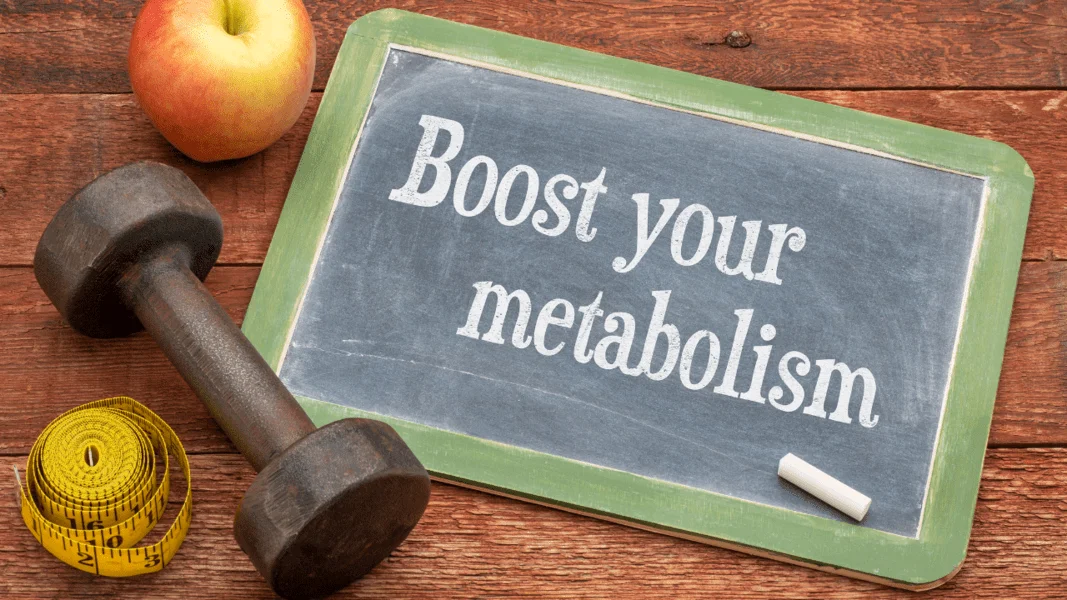
Finding the best healthy snack options for adults doesn’t have to be a challenge! Whether you’re looking for quick bites to fuel your busy day, satisfy cravings, or support your wellness goals, there are plenty of delicious and nutritious choices available. In this guide, we’ll explore snacks that are not only tasty but also perfect for maintaining energy and staying guilt-free.
Whether you are someone with a fast metabolism or one who leads a physically active lifestyle, you may always find yourself craving something. However, you may not be hungry enough to have a big meal which you usually have in your dinner or lunch.
This is why people always keep snacks with them to satisfy their cravings and appetite when they can’t go for big meals. The good thing about snacks is that they are easily accessible and you can carry them anywhere.
However, most health-conscious individuals may also feel concerned about the ingredients used in any specific item. Fortunately, there is good news for such people who want to have healthy options for snacks. There are various items that are prepared specifically with the considerations of health-conscious individuals. By consuming these healthy snacks, you won’t only satisfy your hunger but also enjoy something tasty and flavorful.
Eager to know what are some healthy snacks you can add to your bag? Then keep reading because this article has handpicked some snacks with great nutritional value.
5 Healthy Snack Options Adults Must Try
Looking for something that refuels your body’s energy by providing it with essential nutrients? The good news for you because there are various options for you to consider and pick according to your preferences. This article will throw light on healthy snack options like protein balls, oats bowl, peanut butter cookies, chia seeds, and protein cookies. Scroll down to learn more about all this in detail for best healthy snack options for adults.
1. Protein Balls
Protein balls are an excellent source of energy that have a perfect balance of healthy fats, fiber, and low carbs. The good thing about these snacks is that are quite small in size, allowing you to carry them anywhere you go. You can also call them nutritional bombs because they offer over 390 calories and 23g of protein.
This makes them a good option for fitness freaks who are always considering something rich in protein to consume. However, it’s important to choose the right place to get these grab-and-go snacks. This is why people visit healthy food restaurant in Abu Dhabi to fill their bags with freshly prepared protein balls.
2. Oats Bowl
While most people think of oatmeal when they hear the word oats, there are various variations of this grain. People usually have this in breakfast by making it a type of porridge and adding toppings like fruits, chocolate, vanilla, and others. The good thing about oats is that they are also available as grab-and-go snacks.
There are bowls of oats that are mixed with various other ingredients to provide health-conscious individuals with a flavorful snack to enjoy. On average an oats bowl carries about 398 calories, 18g fat, 31g carbs, and around 19g of protein to improve your fitness and stay healthy.
3. Peanut Butter Cookies
These are also good options to have in your healthy snacks options list. Peanut butter cookies are not only delicious, they are also full of nutrients. They are specifically beneficial for fitness freaks who want a boost in their energy. These cookies can help you improve your performance and help in recovery.
They are considered a rich source of protein which is essential for growing and repairing muscles. You can have them after intense workouts to support muscle recovery and it can also help in building and maintaining metabolism.
4. Chia Seeds
Chia seeds are black and white seeds that are derived from salvia Hispania plants. These small seeds have been a part of the human diet for a long time now. The good thing about these seeds is that they can be used in different food recipes. As for snacks they are available in pots and mixed with other things such as honey and berries.
The reason why they are also considered healthy is because of the benefits they provide. They can assist the body in reducing inflammation, lowering cholesterol levels, reducing blood pressure, helping to control diabetes, etc.
5. Protein Cookies
Do not confuse them with the protein balls, these are cookies that are considered a powerhouse of protein. Everyone loves cookies as their favorite snack option but people are also considered about the ingredients used in these cookies. This is because most cookies offer just taste and are considered less healthy.
Protein cookies are made with healthy ingredients such as whey protein, chocolate, and pecan nuts. They carry around 398 calories, 43g of carbs, 24g of fat, and 9g of protein. All this makes them an excellent option to kill your hunger while enjoying the essential nutrients for. To get these cookies, you can head to a healthy food restaurant to enjoy these freshly baked cookies.
Fuel Your Body with Healthy and Flavorful Snacks
Why consume unhealthy snacks when there are plenty of good options available that offer good nutritional value. You can these snacks from a reputed eatery that offers healthy meals and snacks. Feel free to visit the eatery anytime and get the best healthy snack options according to your choice.
Health
10 Symptoms of a Jaw Infection After a Root Canal and When to Seek Help
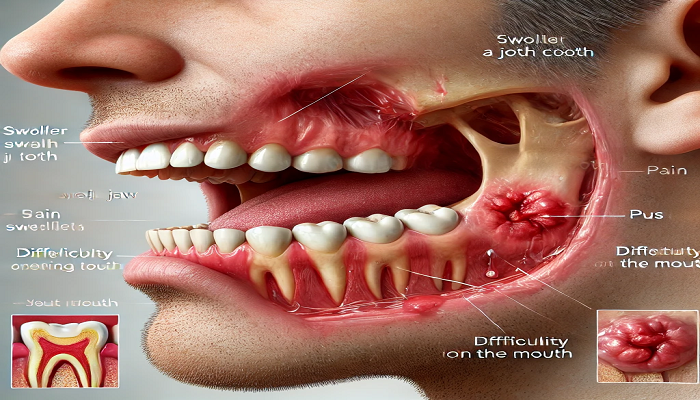
A jaw infection after a root canal is a serious complication that can cause discomfort and may lead to further dental issues if not addressed in time. While root canal treatments are generally successful, there are instances where infections can develop afterward, causing a range of symptoms. Understanding the symptoms of a jaw infection after a root canal can help you take timely action to prevent any severe complications.
In this article, we’ll discuss the 10 common symptoms of a jaw infection after a root canal and when you should seek professional help.
1. Persistent Pain Around the Treated Tooth
Pain is one of the first signs that something might be wrong after a root canal. If the discomfort lasts longer than expected or increases in intensity, it could be an indication of a jaw infection after a root canal. Pain can vary from mild discomfort to sharp, throbbing sensations, especially when chewing or applying pressure to the tooth.
2. Swelling and Tenderness
Swelling around the treated tooth or the jaw area is another common symptom. The swelling may be localized or more widespread, and the area may feel warm or tender to the touch. Swelling is a sign that the body is responding to an infection, and if left untreated, it can lead to more severe complications.
3. Pus or Discharge from the Gums
Infections can lead to the formation of pus, which may drain from the gum near the treated tooth. This discharge is often a clear or yellowish fluid that may have a foul odor. If you notice any pus or abnormal discharge, it’s essential to consult your dentist immediately, as this could indicate a serious jaw infection after a root canal.
4. Bad Breath or Unpleasant Taste
If you experience persistent bad breath (halitosis) or an unusual taste in your mouth following a root canal, it could be a sign of infection. The infection can release unpleasant odors or tastes, signaling the presence of bacteria or pus in the affected area. This is a clear indicator that professional dental intervention is necessary.
5. Fever
A fever is your body’s natural response to an infection. If you develop a fever after undergoing a root canal treatment, it could mean that a jaw infection after a root canal has spread and requires immediate attention. High temperatures coupled with other symptoms like swelling or pain are strong indications of a need for medical treatment.
6. Sensitivity to Temperature Changes
While some sensitivity to hot or cold is normal after a root canal, heightened sensitivity or discomfort to temperature changes can be a symptom of an infection. If the pain persists or worsens when consuming hot or cold foods and drinks, it may suggest that bacteria have entered the tooth and spread to the surrounding jaw tissue.
7. Difficulty Opening the Mouth
Increased pain, swelling, and infection may cause difficulty in fully opening your mouth. This condition, known as trismus, can make eating, speaking, or even swallowing more challenging. If you experience this after your root canal, it is crucial to seek help from a dentist.
8. Red or Inflamed Gums
Healthy gums should appear pink and firm. If you notice that the gums around the treated tooth become red, swollen, or bleed easily, this could be a sign of infection. An infection in the jaw can irritate the gums, making them more prone to inflammation and bleeding.
9. Numbness in the Jaw or Face
In rare cases, a jaw infection after a root canal can lead to nerve damage, which may result in numbness or tingling in the jaw, chin, or lips. If you notice any unusual numbness or tingling in the areas surrounding the treated tooth, you should seek urgent dental care.
10. Lymph Node Swelling
Swollen lymph nodes are a common sign of infection in the body. If your lymph nodes in the neck or jaw area become enlarged and tender to the touch, this could indicate that the infection from your root canal has spread. Lymph node swelling is a serious symptom that warrants immediate dental attention.
What Causes Jaw Infections After a Root Canal?
A jaw infection after a root canal can occur due to several reasons:
1. Incomplete Removal of Bacteria
- If all bacteria inside the tooth are not completely cleaned out, an infection may persist.
- Some bacteria may remain in tiny canals or cracks, leading to reinfection.
2. Cracks or Leaks in the Treated Tooth
- If the tooth has a hidden crack, bacteria can enter and cause an infection.
- A poorly sealed filling or crown can allow bacteria to seep in over time.
3. Weakened Immune System
- People with weakened immune systems due to diabetes, autoimmune diseases, or other conditions are more prone to infections.
4. Poor Oral Hygiene
- Failing to maintain good oral hygiene after a root canal increases the risk of infection.
How to Prevent Jaw Infections After a Root Canal?
1. Maintain Good Oral Hygiene
- Brush and floss regularly to prevent bacterial buildup.
- Use an antibacterial mouthwash to kill germs.
2. Follow Your Dentist’s Instructions
- Take all prescribed medications as directed.
- Avoid hard or sticky foods that can damage the treated tooth.
3. Schedule Regular Dental Check-Ups
- Visit your dentist for follow-up appointments to ensure proper healing.
- Get any minor issues fixed before they turn into major problems.
When to Seek Help for a Jaw Infection After a Root Canal
If you notice any of the symptoms of a jaw infection after a root canal, it’s important to seek help promptly. The earlier you address the infection, the less likely it is to cause complications like abscesses or the spread of infection to other areas of the body.
Here are some guidelines on when to contact your dentist or healthcare provider:
- Persistent Pain: If the pain doesn’t subside after a few days or becomes more severe, contact your dentist.
- Swelling and Discharge: If swelling doesn’t go down or you notice any discharge from the gum, schedule an appointment as soon as possible.
- Fever or Systemic Symptoms: If you develop a fever or any other signs of systemic infection, such as fatigue or chills, contact a healthcare professional immediately.
- Difficulty Moving the Jaw: If you experience difficulty opening your mouth or extreme discomfort while doing so, it’s essential to get medical attention.
- Numbness or Tingling: If you notice numbness, tingling, or a loss of sensation around the treated area, don’t delay in contacting your dentist.
When Should You See a Dentist?
If you experience any of the symptoms above, seek dental care immediately. Delaying treatment can lead to severe complications, such as:
- Spread of infection to other parts of the body
- Bone loss in the jaw
- The need for tooth extraction
- Systemic infections like sepsis (life-threatening condition)
Read More: Indian Food That Women Should Avoid While Pregnancy
Conclusion
The symptoms of a jaw infection after a root canal should never be ignored. Pain, swelling, discharge, and fever are just a few of the signs that something may be wrong. If you experience any of these symptoms, it’s crucial to seek professional dental care as soon as possible to prevent the infection from spreading and causing further damage. By recognizing the symptoms early and addressing the issue promptly, you can ensure a full recovery and maintain the health of your teeth and jaw.
Health
Insurance Code for Removal of Excess Abdominal Skin Folds

The insurance code for removal of excess abdominal skin folds is L8491. This code is used to describe the removal of extra skin and tissue from the abdomen that can cause pain or interfere with daily activities. This procedure is also known as an abdominoplasty, or a tummy tuck.
The insurance code covers both inpatient and outpatient procedures, as well as pre-operative and post-operative care.
If you are considering surgery to remove excess abdominal skin folds, also known as an abdominoplasty, you may be wondering what the insurance code is for this procedure. The good news is that most insurance companies will cover at least a portion of the cost of this surgery if it is deemed medically necessary. There are a few different codes that can be used for an abdominoplasty, depending on the specific circumstances.
The most common code used is 15530, which covers the removal of excess skin and fat from the abdomen. This code can be used for both partial and full abdominoplasties. If your surgeon also tightens the abdominal muscles during your procedure, an additional code (14960) may be used.
As with any surgery, there are always some risks involved. Be sure to discuss these with your surgeon prior to scheduling your procedure so that you can make an informed decision about whether or not this surgery is right for you.
How to Get Insurance to Cover Skin Removal
If you’re looking to get insurance to cover skin removal, there are a few things you’ll need to do. First, you’ll need to consult with your doctor to see if they believe the surgery is medically necessary. Once you have documentation from your doctor, you can then start the process of filing a claim with your insurance company.
Most insurance companies will require that you try other methods of treatment before they will approve coverage for skin removal surgery. This means that you may need to try things like topical creams or radiation therapy before your insurance company will agree to pay for the surgery. However, if your doctor believes that surgery is the best course of treatment, they will likely work with you and your insurance company to help get the surgery covered.
When it comes time to file a claim, be sure to have all of your documentation in order. Your insurance company will want to see proof of medical necessity, as well as any quotes or estimates for the cost of the surgery. If everything looks in order, your claim should be approved and you’ll be on your way to getting the skin removal surgery that you need!
What are the Codes for Panniculectomy?
Panniculectomy is a type of surgery that removes excess skin and fat from the lower abdomen. The procedure is also known as an abdominal panniculectomy or an apronectomy. Panniculectomies are typically performed to treat patients who have undergone massive weight loss and are left with large amounts of excess skin.
This can cause physical pain and discomfort, as well as problems with hygiene. Panniculectomies can also be performed for cosmetic reasons. The codes for panniculectomy vary depending on the extent of the surgery.
A partial panniculectomy (CPT code 15830) involves removal of the excess skin and fat from below the belly button. A full panniculectomy (CPT code 15831) includes removal of all the excess skin and fat from the lower abdomen, including any tissue that hangs over the pubic area (known as a paunch). In some cases, liposuction may be used in addition to or instead of a panniculectomy (CPT code 15832).
As with any surgery, there are risks associated with panniculectomies. These include bleeding, infection, blood clots, and adverse reactions to anesthesia. However, these risks are generally low and most patients experience no complications following their surgery.
What is the Cpt Code for Removal of Abdominal Fat?
The CPT code for removal of abdominal fat is 41500. This code is used to report the surgical procedure known as liposuction, or suction-assisted lipectomy, of the abdomen. Liposuction is a surgical procedure that removes fat from the body using a suction device.
The CPT code for removal of abdominal fat includes both subcutaneous and intra-abdominal fat.
What is the Cpt Code 15847?
CPT code 15847 is a medical code that describes the removal of skin from the breast. This procedure is also known as a skin-sparing mastectomy or nipple-sparing mastectomy. It is often performed in cases of breast cancer, where the goal is to remove as much of the cancerous tissue as possible while sparing as much healthy tissue as possible.
The CPT code 15847 can be used for either partial or total removal of skin from the breast.
What is Procedure Code 15830?
Procedure code 15830 is a medical code used to describe the surgical procedure known as Mohs micrographic surgery. This type of surgery is used to treat skin cancer, and is considered to be the most effective method of treating this disease. The procedure involves removing the cancerous tissue layer by layer, and examining each layer under a microscope.
Once all of the cancerous tissue has been removed, the wound is then closed with stitches or skin grafts.
Conclusion
In order to remove excess abdominal skin folds, also known as panniculus, you must have a valid insurance code. The most common codes used are 15730 and 15830. These codes are designated for the removal of extra skin and tissue in the abdominal area that hangs down below the waistline.
It is important to note that not all insurance companies will cover the removal of excess abdominal skin folds, so it is important to check with your provider beforehand.
Health
Indian Food That Women Should Avoid While Pregnancy
Pregnancy is a beautiful and crucial phase in a woman’s life. During this period, maintaining a healthy diet is essential for both the mother and the developing baby. While Indian cuisine is rich in flavors and nutrients, there are certain foods that should be avoided to ensure a safe and healthy pregnancy. Here’s a guide to Indian foods that women should avoid during pregnancy.
Pregnancy can be a very delicate time in a woman’s life. Every visit to the baby scan clinic, each signal, every problem, has a lot to do with your pregnancy. Just like waiting for your baby to kick, so do the scans. Every woman desires spicy foods during pregnancy but needs Food That Women Should Avoid While Pregnancy. It is important to be able to control your diet by having a good understanding of different food types.
Here is the list of some Avoiding foods that a woman should contain while pregnant also we can know about What Is Protective food? 15+ Best Example To Improve Stamina
Salty foods While pregnancy
Some women feel the need to eat salty and spicy foods while pregnant. Although salty foods can be satisfying during pregnancy, high salt levels can cause increased water retention that can lead to serious pregnancy complications.
Street food While pregnancy
Avoid street food. These foods should be avoided while pregnant. Pregnant mothers are very sensitive and should be cautious about what foods they eat. These foods may be prepared with contaminated water, unclean utensils, or improperly stored ingredients, which can lead to foodborne illnesses. To stay safe, it’s best to avoid street food during pregnancy.
Aloe vera While pregnancy
Aloe vera may cause premature contractions. It can also affect your uterus. Consuming aloe Vera can cause nausea and vomiting. It can also be dangerous for unborn babies. Avoid consuming aloe during pregnancy. It can cause miscarriage during the second trimester.
Chicken While pregnancy
Pregnant women may find chicken harmful. Chicken meat can have a number of bacteria and parasites which can pose a health risk to your baby. Eye problems, epilepsy, and disabilities are some of the most common health issues for women.
Raw eggs Food While pregnancy
Most miscarriages are caused by second-trimester miscarriage. This is due to food with raw eggs. They are at higher risk of increasing Grade 2 fatty liver contracting the Salmonella virus, which can cause many complications during pregnancy.
Papaya and Pineapple
While fruits are generally considered healthy, there are a few exceptions during pregnancy. Raw papaya, especially its unripe form, contains an enzyme called papain, which can trigger uterine contractions and potentially lead to miscarriage.
Pineapple is also sometimes avoided during pregnancy, as it contains bromelain, which may soften the cervix and cause early labor.
Cooked or ripe papayas and pineapples can be consumed in moderation, but it’s best to consult a healthcare provider before including them in your diet.
Conclusion
Pregnancy is a time to be extra cautious with your food choices. While Indian cuisine offers a vast array of delicious options, certain foods and preparation methods can pose risks to both the mother and baby. It’s essential to prioritize food safety and ensure that your diet is balanced, nutritious, and free from harmful substances. Always consult your doctor or a nutritionist to ensure that you’re making the best choices for a healthy pregnancy.
-
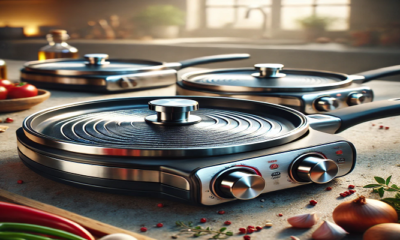
 Business4 months ago
Business4 months agoThe Disadvantages of Electric Skillets You Need to Know
-
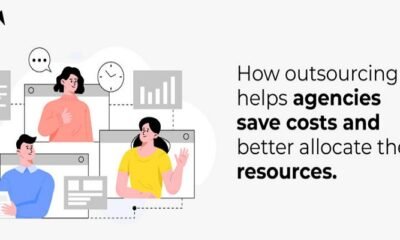
 House4 months ago
House4 months agoHow Outsourcing Helps Agencies Save Costs and Better Allocate Their Resources
-
Business4 months ago
6 Key Benefits of Email Automation for Lead Nurturing
-
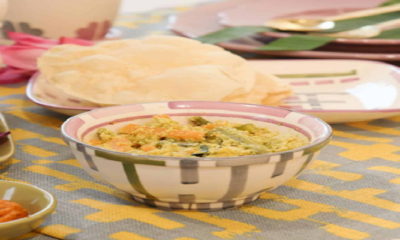
 Business4 months ago
Business4 months agoThe Art of Ceramic Bowls: Handmade vs. Machine-Made
-

 Business4 months ago
Business4 months agoApostille vs. Notarization: What’s the Difference and Why It Matters
-

 Technology5 months ago
Technology5 months agoSearch Engines that Search URL and not Description | Top URL Tools
-

 Entertainment6 months ago
Entertainment6 months agoUnderstand: Post-Apocalyptic Literature Bingo: Songs of Your Decay
-

 Other Blog5 months ago
Other Blog5 months agoWhat is the ://vital-mag.net Blog About?




